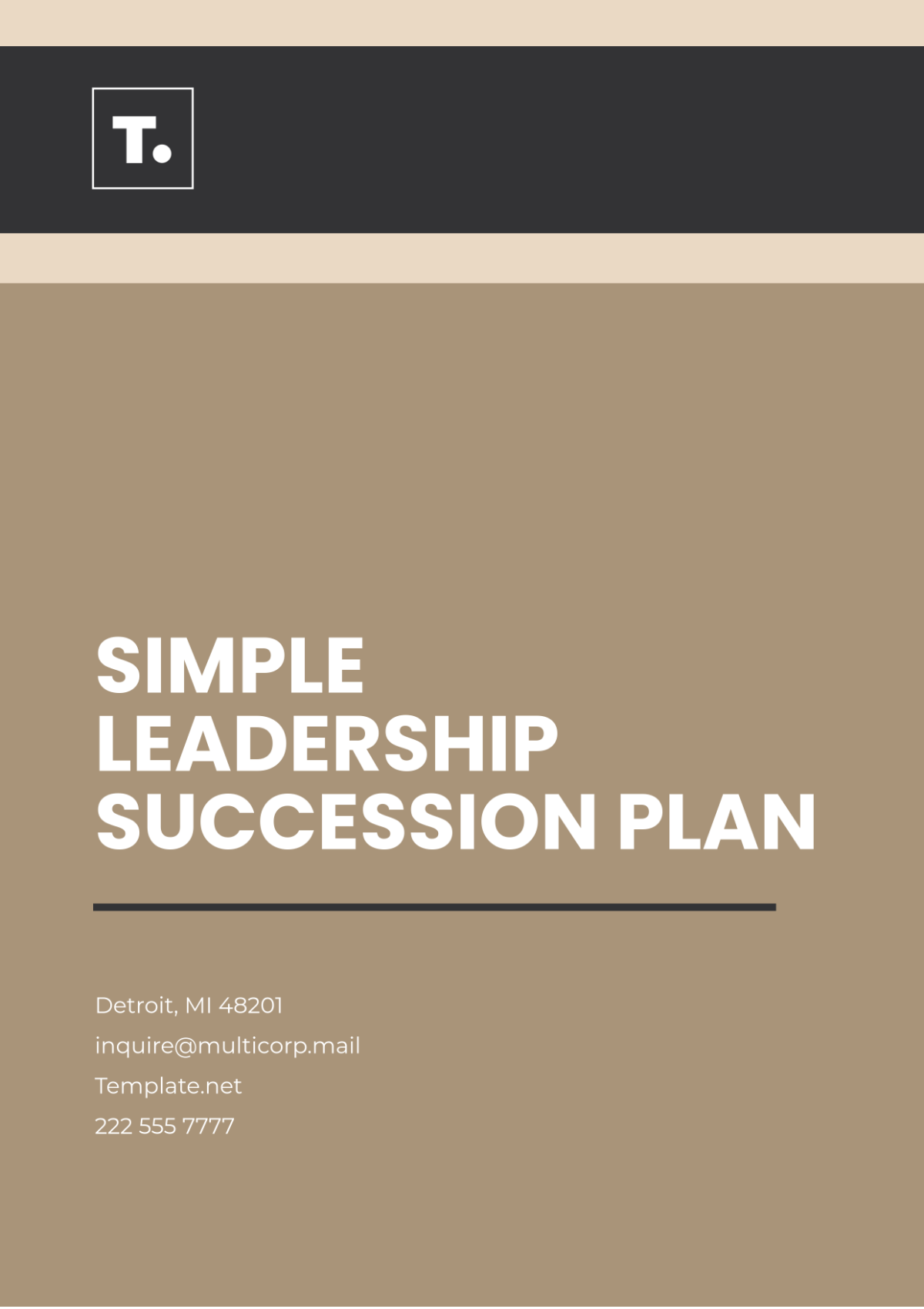The Leadership Succession Plan Template That Will Change Your Business
In the dynamic landscape of modern business, change is the only constant. And one of the most critical changes any organization must navigate is the transition of its leadership. A well-defined leadership succession plan isn’t just a good idea; it’s a strategic imperative. It ensures continuity, minimizes disruption, and safeguards your company’s future. This article will guide you through a comprehensive leadership succession plan template, providing the framework you need to protect your organization from the unexpected and build a legacy of success.
Why a Leadership Succession Plan is Non-Negotiable
Leadership vacancies can arise from various sources: retirement, unexpected departures, promotions, or even internal restructuring. Without a robust succession plan, these events can lead to:
- Decreased Productivity: Uncertainty and lack of clear direction can cripple teams.
- Loss of Institutional Knowledge: Experienced leaders possess invaluable insights that can be lost without proper transfer.
- Damage to Employee Morale: Unclear leadership transitions can create anxiety and lead to valuable employees leaving the organization.
- Missed Opportunities: Hesitation during critical decision-making can allow competitors to gain an advantage.
- Financial Instability: The costs associated with leadership transitions (recruitment, training, lost productivity) can be significant.
A proactive succession plan mitigates these risks, ensuring a smooth transition and maintaining business momentum.
The Leadership Succession Plan Template: A Step-by-Step Guide
This template provides a structured approach to developing a successful leadership succession plan.
1. Assess Current Leadership and Future Needs
- Identify Key Leadership Roles: Begin by pinpointing the critical leadership positions within your organization. This includes C-suite executives, department heads, and any other roles essential to the company’s operations.
- Evaluate Current Leaders: Conduct thorough performance reviews, considering skills, experience, leadership style, and potential for future growth.
- Analyze Future Needs: Project your organization’s strategic goals and identify the leadership skills and competencies required to achieve them. Consider factors like industry trends, market demands, and technological advancements.
- Create a Skill Matrix: Map the required skills for each leadership role and assess the current leaders’ proficiency in those areas.
2. Identify and Develop High-Potential Candidates
- Internal Talent Identification: Look within your organization for individuals with the potential to assume leadership roles. This can involve performance reviews, 360-degree feedback, and leadership assessments.
- External Talent Search (Optional): Consider external candidates if internal options are limited or if specific skills are required.
- Develop a Succession Pool: Create a list of potential successors for each key leadership role, along with their readiness levels.
- Implement Development Programs: Provide targeted training and development opportunities to prepare potential successors. This might include:
- Mentoring Programs: Pairing high-potential employees with experienced leaders.
- Leadership Training: Offering workshops, seminars, and executive education programs.
- Cross-Functional Assignments: Exposing potential successors to different areas of the business.
- Stretch Assignments: Assigning challenging projects that allow individuals to demonstrate their capabilities.
3. Plan for Transition and Implementation
- Define Transition Timelines: Establish a realistic timeline for each leadership transition, considering factors such as the current leader’s departure date and the readiness of the successor.
- Develop a Communication Plan: Communicate the succession plan transparently to employees to minimize uncertainty and build trust.
- Establish Handover Processes: Create detailed processes for transferring knowledge, responsibilities, and relationships to the successor.
- Monitor and Evaluate: Regularly review the succession plan, track the progress of potential successors, and make adjustments as needed.
- Contingency Planning: Develop backup plans for unforeseen circumstances, such as the unexpected departure of a potential successor.
4. Review and Refine Your Plan Regularly
- Annual Reviews: Conduct an annual review of your succession plan to ensure it remains relevant and aligned with your business goals.
- Update Candidate Profiles: Regularly update the profiles of potential successors to reflect their progress and development.
- Adapt to Change: Be prepared to adapt your plan to changing circumstances, such as changes in leadership, market dynamics, or organizational strategy.
Benefits of a Well-Defined Leadership Succession Plan
Implementing a robust leadership succession plan brings numerous benefits:
- Increased Employee Engagement: Shows employees their opportunities for growth, which boosts morale and loyalty.
- Enhanced Organizational Resilience: Prepares your organization for leadership transitions, minimizing disruption.
- Improved Decision-Making: Ensures that critical decisions are made consistently and effectively.
- Protection of Intellectual Capital: Preserves valuable knowledge and experience within the organization.
- Attracting and Retaining Top Talent: Demonstrates your commitment to employee development.
- Improved Company Value: Investors see succession planning as a sign of good management and future prospects.
FAQs about Leadership Succession Planning
1. How often should we update our succession plan?
Regularly. At a minimum, review and update your plan annually. However, monitor your succession pool and update candidate profiles more frequently.
2. What if we don’t have internal candidates for key roles?
Explore external talent search strategies. Also, consider investing in more robust leadership development programs to cultivate future internal leaders.
3. How do we ensure the successor is a good fit?
Thorough assessment is crucial. Use a combination of performance reviews, 360-degree feedback, skill assessments, and interviews to evaluate candidates. Consider shadowing and temporary assignments to assess their capabilities in a leadership role.
4. Can a succession plan be too rigid?
Yes. While a structured plan is essential, flexibility is also important. Be prepared to adapt to unforeseen circumstances and make adjustments as needed.
5. What are the key metrics to measure the success of a succession plan?
Track the time it takes to fill leadership vacancies, the performance of new leaders, employee engagement, and the overall financial performance of the organization.
Conclusion: Securing Your Future
A well-crafted leadership succession plan is not just a document; it’s a strategic investment in your organization’s future. By following the template outlined above, you can proactively manage leadership transitions, minimize disruption, and ensure a smooth path to continued success. Embrace the power of succession planning and create a legacy that will endure for generations to come.




